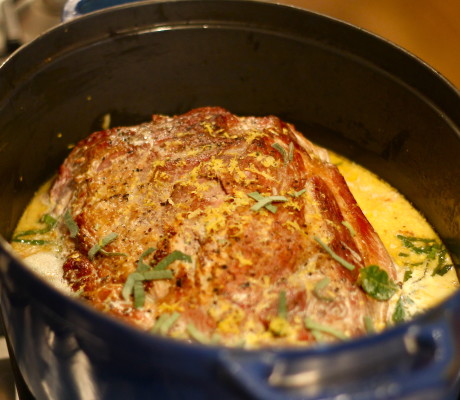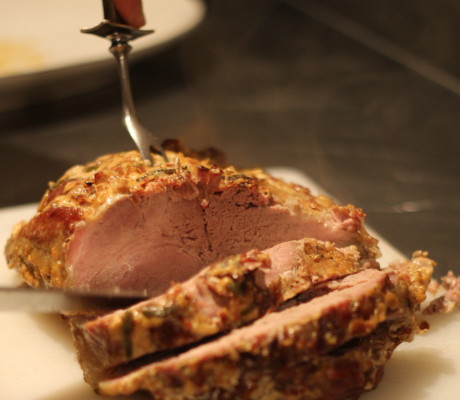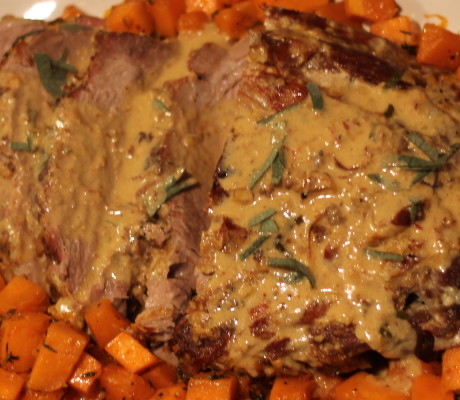


Braising is cooking with a small amount of liquid, much less than poaching, which is cooking with enough liquid to cover all the ingredients in the pot but more than roasting, cooking without any liquid. Braising is related to stewing, but in general calls for one large piece of meat whereas stewing uses meat cut into small pieces. Braising also uses less liquid than a stew and ends up with a more concentrated sauce. Braising is the perfect technique for less expensive, chewier pieces of meat. The long, moist cooking method tenderizes the connective tissue, dissolving the collagen into gelatin.
A key element to braising is searing the meat before you cook it. To achieve a really good, dark, golden brown color and develop a deep caramelization make sure your meat is completely dry and your cooking fat is hot. You don’t want to rush this step, the browner the meat the more flavor you will have in the final dish.
After the meat is brown and the liquid is added and brought up to a low simmer, I transfer the pot to the oven. The heat of the oven is more constant and keeps the liquid at a low simmer for the entire cooking time. I just leave it to cook except to baste from time to time and get on with doing something else.
This recipe, combining several versions that I have used over the years, uses milk as the braising liquid that caramelizes as it cooks to produce an exceptionally rich and savory sauce, however the milk curdles in the process so it will not look very promising coming out of the oven. After removing the meat, I blend the sauce with a hand held blender to give it a smoother taste and appearance.
For this dish I would use an Echine de porc, this is a tough, fatty cut from front of the pig, on the upper part of the shoulder which I buy on the bone. This cut is often translated as a shoulder roast, but a Boston Butt (in the US) or pork shoulder on the bone (in the UK) might be closer equivalents.
Mashed potatoes or pumpkin sautéed with thyme would make delicious side dishes.
Ingredients
Instructions